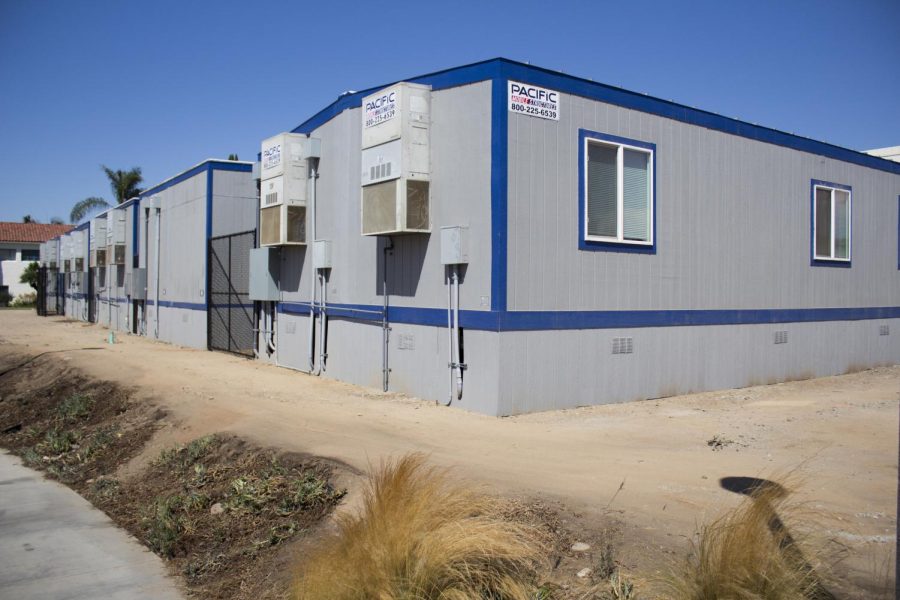San Diego State has begun using five new Professional Studies and Fine Arts annex buildings, labeled PSFX, behind the Music building in light of the main building’s closure last semester.
The addition of the annex serves to accommodate faculty and staff who were forced to vacate the PSFA building and relocate to other spaces on campus such as Adams Humanities, associate vice president of business operations Eric Hansen said. A total of four campus departments had to find new homes on campus after last semester’s closure.
“(The annexes were opened) to meet the needs of space for the folks who have vacated PSFA during the construction,” Hansen said. “There were two areas in Adams Humanities that were used as classrooms last year that are now being used by the PSFA faculty and staff.”
The relocation of departments out of the main PSFA building started last spring after materials used in a roofing project produced dangerous chemical odors in the building. These odors led to over two dozen reports of symptoms such as headaches, nausea and nosebleeds.
An informational webpage about the closure said the building is currently undergoing renovations and that it could be up to two years before the space is back to normal.
The closure also resulted in the relocation of over 200 classes. Hansen said two of the spaces in the annex are currently being utilized as classrooms because some class space in Adams Humanities was lost following the office relocations.
“Those two classrooms needed to be replaced,” Hansen said. “So, two of the modulars are for basically replacement of those classrooms.”
Students who have classes in the annex have mixed opinions of the classroom layout.
Environmental science senior Shandi Gordon said the long shape of the modulars can make it difficult to follow lectures.
“It’s alright, but it’s still an inconvenience,” Gordon said. “The screen’s really far away if you sit in the middle or even in the back (of the classroom).”
Environmental science sophomore Danielle Stroh, who’s had classes in the original PSFA building, said the structure of the annex makes the classroom tighter and less comfortable compared to the classrooms in PSFA.
“It’s a little awkward because (the classroom is) super skinny and long,” Stroh said. “I would say there’s more space in the other (PSFA classroom), and it’s more comfortable, less crowded and less tight.”
Africana studies lecturer Delores Fisher, who is currently teaching a communications course in the annex, said the ramps leading to the classrooms may present some difficulties for individuals with walking disabilities.
“The only thing I would consider is the length of the ramps,” Fisher said. “It seems to be long for someone who has to use a manual wheelchair as opposed to an automatic wheelchair. I force myself up the stairs with my disability.”
Hansen said the annex will remain on campus while PSFA is completing construction and will be removed after a year.
“We believe they will be through as maybe as long as next fall,” Hansen said. “So by December of 2020 they should be done.”
For some students, the annex represents a stain on the university’s history.
Journalism and psychology fifth-year Brandon Lim said the annexes could’ve been avoided if the university had properly handled PSFA’s maintenance and repair issues in the first place.
“I think my only main complaint is that we need the annex in the first place,” Lim said. “If our existing buildings were properly maintained and regulated, we would not have to be in the annex.”












